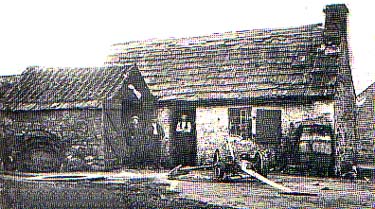 |
 |
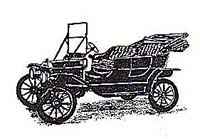 |
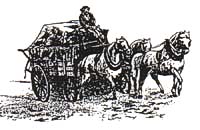 |
 |
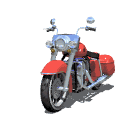 |
 |
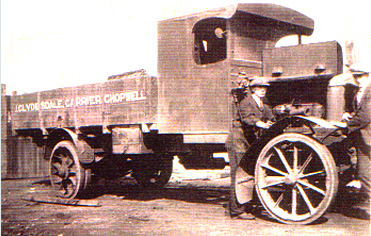 |
 |
| TRANSPORTATION |
| TRANSPORTATION |
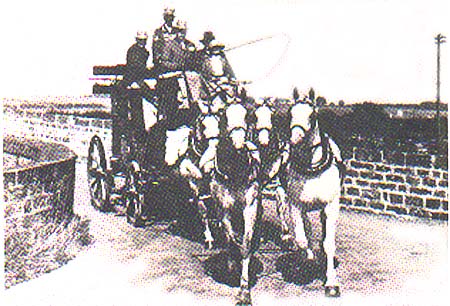 |
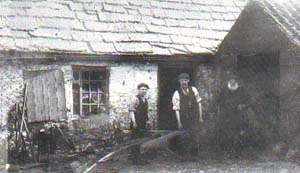 |
| The village blacksmith not only made and repaired farm implements and shoed horses, he played a large part in keeping transport in the area moving. Wooden wheels on carriers' and farm carts required iron tyres, the carts themselves needed wrought iron fittings for the shafts and such. It could be said therefore that the blacksmith's shop was the forerunner of today's garage. This one above was at Iveston from the 1700's until 1958. |
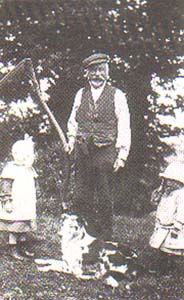 |
| THE VENTURE COACH, pictured right, ran from Shotley to Blanchland in the 1920's and then in the 1930's, to Edmundbyers. It was a reminder of the stagecoaches which had previously provided country-wide transportation for the public. |
| Horses were now being phased out as the petrol engine took over and with the end of the Great War, local carriers, such as Clydesdale's of Chopwell, were |
| buying war-surplus lorries, such as their first 5 ton Leyland pictured here on the right and Henry Ford's mass-produced models were quite popular. Before the war, very few cars were to be seen in a village and G.C. Johnson (a High Spen builder) taking his family for a run in his 1911 Argyle must have created interest, below. |
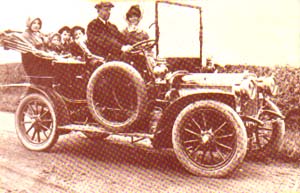 |
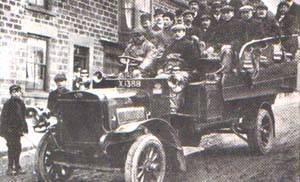 |
| A year earlier in 1910, these licensed Victuallers were no doubt praying that the brakes would work on the steep Durham Road at Blackhill (above right) |
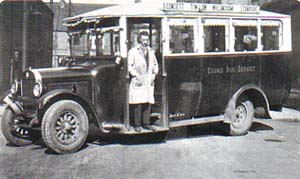 |
| The early 1920's bus routes, such as Chopwell-Newcastle were fiercely competitive as rival firms strived to take passengers from each other. |
| Left: Cook's Bus Service ran from Consett to Tow Law via Wolsingham and Stanhope and must have had difficult times on that route in winter. |
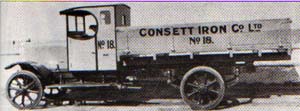 |
| On the right is an early C.I.C solid tyred lorry. Below is an early works B9 loco in 1887 |
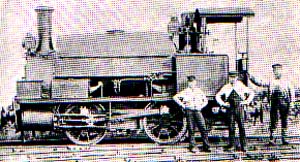 |
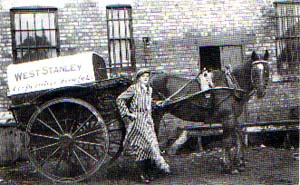 |
| The Co-op butcher's carthorse is posing too in this picture. |
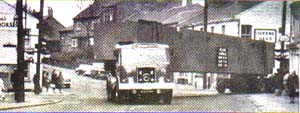 |
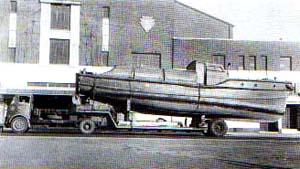 |
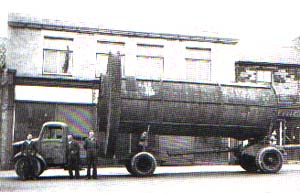 |
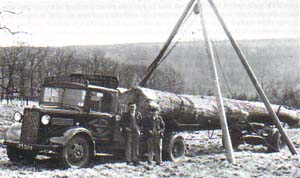 |
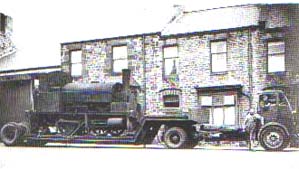 |
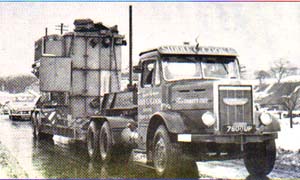 |
| If it was huge and extremely heavy, it was a job for Siddle Cook's Transport (below) |
| Below: Negotiating Leadgate crossroads was tricky when your load was a huge girder (1966) |